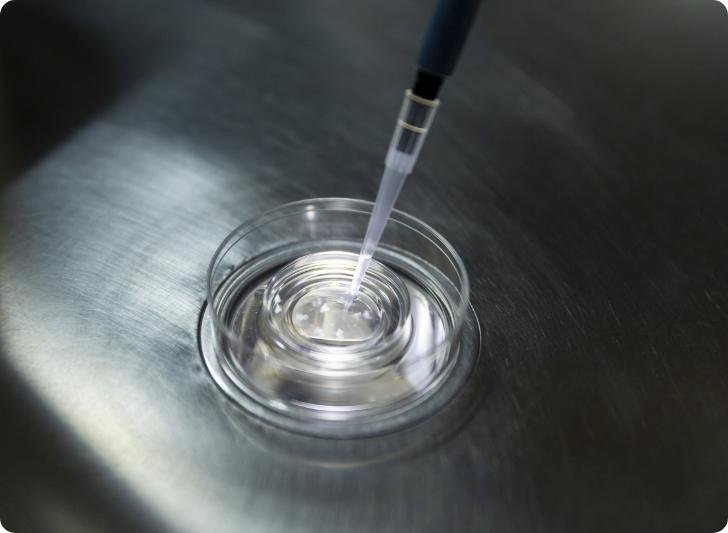In-Vitro Fertilization and Embryo Transfer (IVF-ET)(Regular/Batch)
- Services
Thorough Subfertility Couple Counseling
Comprehensive Subfertility Workup of Subfertile Couple
Transvaginal Sonography (TVS) of Subfertile Female
Sono Hystero Salpingo Graphy (SSG)
Timed Intercourse (TI)
Intra Uterine Insemination (IUI)
In-Vitro Fertilization and Embryo Transfer (IVF-ET) (Regular/Batch)
IntraCytoplasmic Sperm Injection (ICSI)
Cryopreservation of Sperm
Vitrification (Oocytes & Embryos)
Donor Programme
Andrology Services
Pathology Routine/ Hormone Estimation
Radiology
Fetal Echocardiography
Antenatal Clinic
Endocrinology
Any Questions About Fertility challenges
Call Anytime!
+977 9840187810

Introduction
What is IVF-ET?
Who Should Consider IVF-ET?
IVF-ET is a suitable fertility treatment for individuals and couples facing:
Blocked Fallopian Tubes:
Women with blocked or damaged fallopian tubes that prevent natural conception.
Persistent Anovulation:
Women who are unable to ovulate regularly, even with other treatments.
Unexplained Infertility:
Couples who have had 3-6 failed Intra Uterine Insemination (IUI) cycles without a clear cause for infertility.
Regular and Batch IVF
Customized Options for Your Unique Fertility Needs
Explanation of Options
At Creator’s IVF Nepal, we offer both Regular IVF and Batch IVF, allowing us to provide personalized care based on your medical needs and preferences. Each protocol is designed to optimize success while minimizing stress and discomfort.
1. Regular IVF
Personalized IVF Protocols for Quick and Efficient Treatment Regular IVF includes various protocols tailored to the patient's individual requirements:
IVF Long Protocol:
A standard approach involving hormone stimulation over several weeks.
IVF Short Protocol:
A faster, hormone-light approach for suitable candidates.
IVF Antagonist Protocol:
Minimizes the use of certain hormones, reducing side effects and treatment time.
2. Batch IVF
Batch IVF uses an ultra-long protocol and is performed in grouped cycles, optimizing resources while providing highly specialized care. This approach is often recommended when multiple factors need to be managed over a longer period.
Regular IVF Benefits
Batch IVF Benefits
The IVF-ET Process
1. Initial Consultation
Your IVF journey begins with an initial consultation where we assess your medical history, fertility status, and any previous treatments. Based on this evaluation, we create a customized treatment plan that meets your specific fertility goals.
2. Egg Retrieval
Egg retrieval is performed under ultrasound guidance and involves the collection of mature eggs from the ovaries using a minimally invasive procedure. This is done under light sedation to ensure your comfort.
- Preparation: You’ll be advised on how to prepare for the egg retrieval procedure, which includes avoiding certain medications and fasting for a few hours.
- During the Procedure: The procedure takes about 10 to 15 minutes, during which time the eggs are gently collected using a thin needle.
- After the Procedure: You may feel slight cramping, but most patients can resume normal activities within a day or two.
3. Fertilization in the Lab
Once the eggs are retrieved, they are fertilized with sperm in a laboratory setting. Our expert embryologists closely monitor the development of the embryos over the next few days.
4. Sperm Collection and Preparation
Sperm is collected from the male partner or donor on the day of the procedure. It is then carefully prepared and concentrated to ensure only the healthiest, most motile sperm are used for fertilization.
5. Embryo Development
The embryos are closely monitored in our advanced lab, where we track their growth and select the healthiest embryos for transfer.
6. Embryo Transfer
The final step is embryo transfer, where one or more healthy embryos are gently placed into your uterus.
- Preparation: You’ll receive instructions on how to prepare for the transfer, including any medications or lifestyle adjustments.
- During the Procedure: Embryo transfer is a simple, painless procedure that does not require sedation. A thin catheter is used to place the embryos into the uterus.
- After the Procedure: You can resume normal activities shortly after. We’ll monitor your progress and conduct a pregnancy test within two weeks.
Benefits of IVF-ET
Advanced Technology:
IVF-ET uses advanced reproductive technologies to enhance your chances of conception. From egg retrieval to embryo development, each stage is carefully optimized to improve pregnancy outcomes.
Personalized Treatment:
We believe in creating personalized treatment plans that fit your individual medical history and fertility goals. Our team of experts provides ongoing support and guidance throughout your IVF journey, ensuring you feel informed and empowered at every step.
Frequently Asked Questions
Is IVF painful?
2. How long does IVF take?
What are the success rates of IVF?
How many embryos are transferred during IVF?
This depends on factors like age and embryo quality, but most clinics recommend transferring 3 embryos to maximize the chance of conception.
